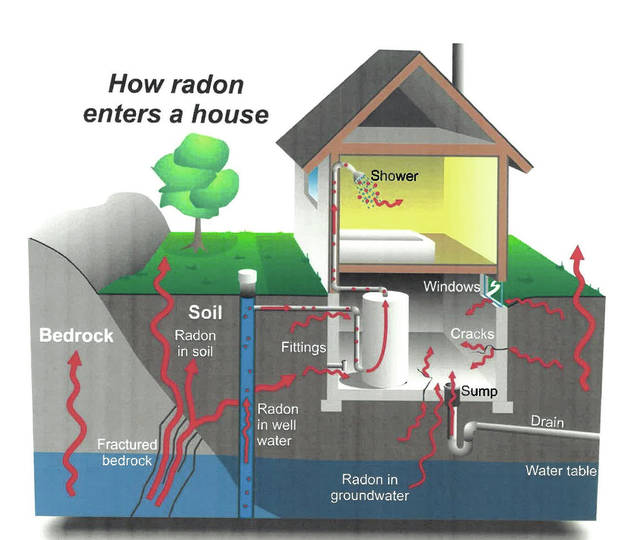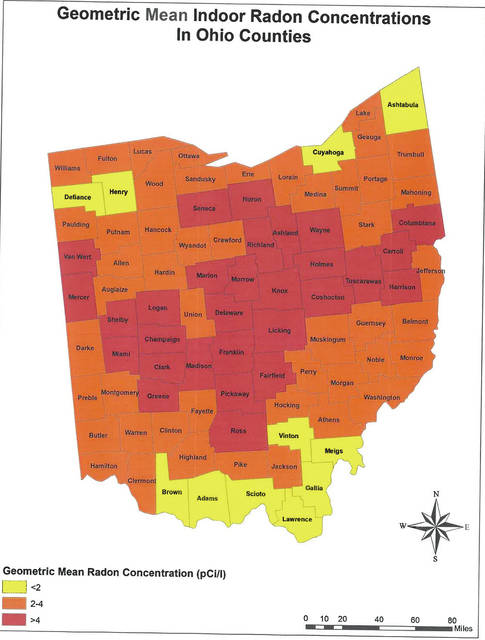

Editor’s note: This is part of an ongoing series from the Champaign Health District to educate local residents about the risks of radon in their homes.
The Champaign Health District is encouraging local residents to consider the effects radon could have on their home environments and their health.
According to the U.S. Surgeon General, radon is the second leading cause of lung cancer among smokers and the leading cause of lung cancer among non-smokers.
Radon is a naturally occurring, odorless, tasteless radioactive gas that can be inhaled and may cause lung tissue damage or increase the chances of lung cancer.
Much of the soil in Ohio contains quantities of uranium and radium. These minerals continuously break down and release radon gas. Ohio’s geology provides an ongoing supply of radon.
Although radon is present throughout the environment, radon levels indoors are generally higher, which increases the risk of cancer. Elevated levels of radon have been found in homes in all 88 counties in Ohio.
Radon can enter a home through the floor and walls, anywhere there is an opening between the home and the soil. Examples of such openings include dirt floor crawl spaces, unsealed sumps, utility openings and cracks in the foundation floor and walls. Once radon enters a home it moves throughout the structure.
A radon test is the only way to find out if your home has elevated levels of radon. The U.S. Environmental Protection Agency and the Ohio Health Department recommend every Ohio home be tested for radon.
Winter is best time to test for radon
Winter is an opportune time to test the radon levels in homes. Homes are built more tightly than in the past and radon levels are more apparent in winter due to lower ventilation of outdoor air.
Performing a radon test is easy, inexpensive and can be done privately. Every home is unique due to its local soil, construction details and maintenance. Therefore, test results from nearby homes cannot be relied upon to predict the radon level in another home.
Likewise, previous test results may not reflect current and future radon levels for a home. Remodeling, changes made to the heating, air conditioning or other ventilation systems, adding exhaust fans or other home improvements can influence radon levels in a home.
The Champaign Health District distributes information on radon test kits when available. For assistance and information, call the county health district at 937-484-1606 or log on to www.champaignhd.com/radon
If your radon test indicates that your home has elevated levels of radon, have a radon mitigation system installed by a mitigation contractor licensed by the Ohio Department of Health.
Additional information about radon and a list of area radon mitigation professionals can be found at the Ohio Department of Health’s Indoor Radon Program at www.odh.ohio.gov and 800-523-4439.
Information also can be found at the U.S. EPA’s www.epa.gov/radon and 800-SOS-RADON.



